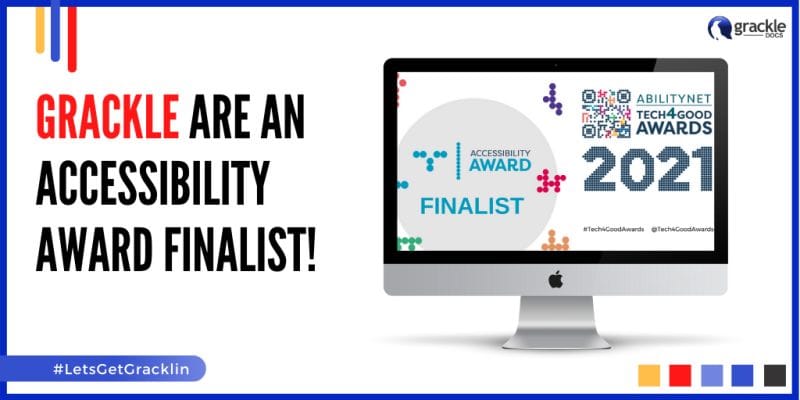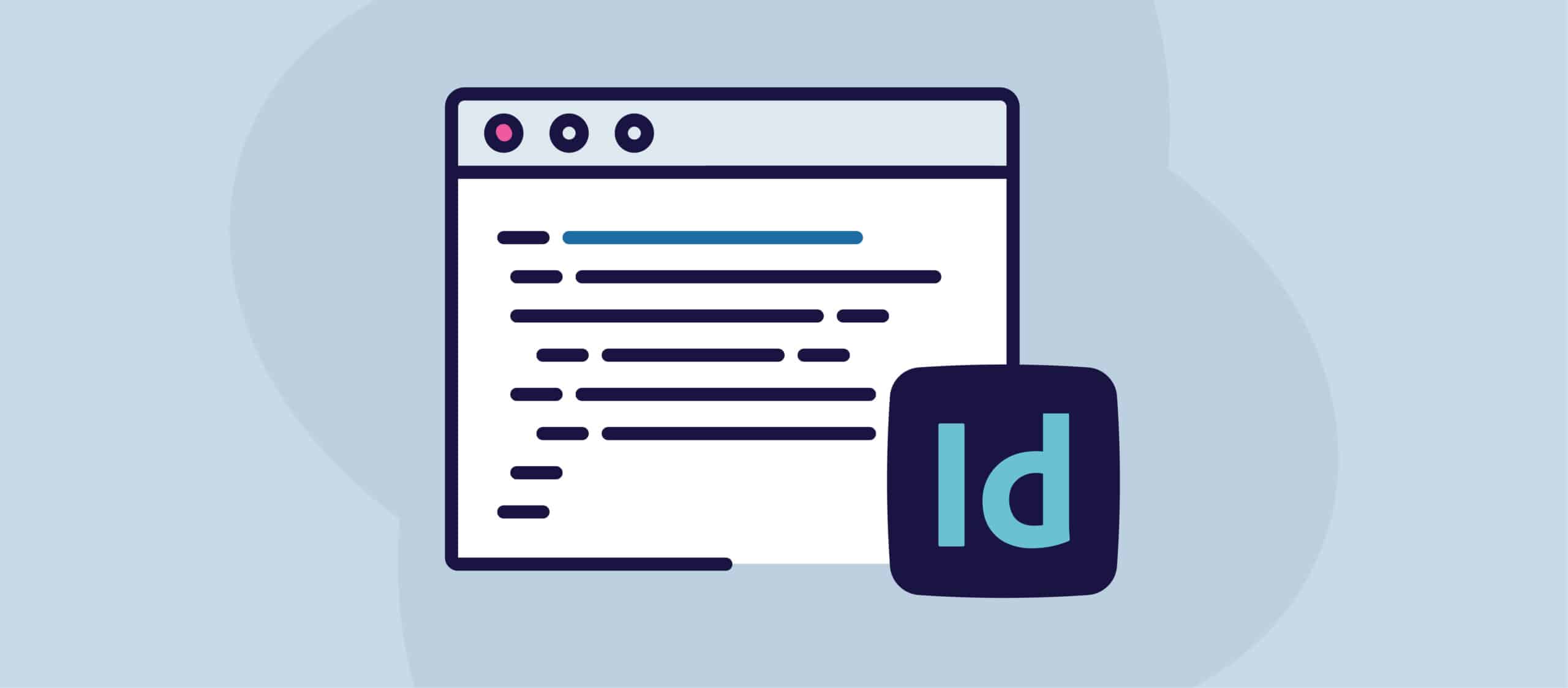In today’s digital age, accessibility is paramount. Emerging technologies like AI, IoT, and augmented reality are reshaping web accessibility, breaking barriers, and fostering inclusivity. Compliance with global standards such as WCAG and ADA is streamlined through digital accessibility tools, ensuring websites and documents meet accessibility requirements.
The collective responsibility to prioritise digital inclusivity drives the integration of universal design principles and advanced accessibility features. Embracing tools like web accessibility testing software and PDF accessibility checkers facilitates a more inclusive online environment, reflecting technology’s transformative potential in creating a digitally accessible world for all.
The Current State of Digital Accessibility
The landscape of digital accessibility today is at a critical juncture, with advancements working to bridge the digital divide, though significant challenges remain. The integration of technology into everyday life has bolstered the demand for accessible digital content, spotlighting the legal, ethical, and practical need for inclusivity. Digital accessibility focuses on crafting websites, tools, and technologies that are usable by everyone, including individuals with disabilities. This encompasses making digital platforms navigable and comprehensible for people with visual, auditory, motor, and cognitive impairments.
Accessibility standards, such as the Web Content Accessibility Guidelines (WCAG), set the bar for creating inclusive digital experiences, providing a roadmap for developers and designers to make online services accessible to a wider audience. Beyond the web, digital accessibility’s impact spans several sectors. In education, it ensures learning materials are available to all students, promoting an inclusive environment. For corporations, embracing accessible technologies expands customer reach and supports social responsibility goals. In entertainment, it guarantees that digital content is universally enjoyable, allowing inclusive participation in cultural and social activities.
Despite progress, the rapid pace of technological advancements and gaps in awareness and enforcement of accessibility standards pose ongoing challenges. Nonetheless, the concerted efforts of advocacy groups, tech companies, and regulatory bodies are dedicated to overcoming these obstacles, underlining a shared commitment to a more inclusive digital world. As technology and digital accessibility continue to evolve, they pave the way towards a future where digital spaces are accessible to everyone, reflecting a collective aspiration for universal access.

Technological Innovations in Accessibility
Technological innovations are significantly advancing the field of digital accessibility, making online platforms more inclusive for individuals with disabilities. Artificial intelligence (AI) and machine learning, alongside augmented reality (AR) and virtual reality (VR), are leading these transformative changes, reshaping how users interact with digital content and navigate virtual spaces.
AI and Machine Learning:
AI and machine learning technologies are transforming accessibility features, now extending to document creation. Utilising Natural Language Processing (NLP), AI assists in marking up documents, speeding up the process of creating PDF/UA compliant files. This advancement benefits individuals with motor or visual impairments, facilitating hands-free navigation and ensuring content is accessible from the outset. As AI algorithms continue to evolve, they promise to further streamline accessibility across digital platforms, marking a significant step towards inclusivity.
AR/VR for Enhanced Access:
AR and VR technologies revolutionise digital accessibility by creating immersive experiences. AR aids users with visual impairments by overlaying digital info onto the physical world, while VR offers inclusive learning environments for students with disabilities. For those with mobility issues, VR simulates diverse settings, circumventing accessibility barriers. Additionally, therapeutic applications, like aiding individuals with autism or PTSD, highlight the versatility and impact of these technologies.
The ongoing advancements in AI, machine learning, AR, and VR are central to developing a more inclusive digital landscape. These technologies offer innovative solutions that cater to the unique needs of individuals with disabilities, ensuring digital environments are not only accessible but also engaging and meaningful for all users. As we continue to explore the potential of these technological innovations, the future of digital accessibility looks promising, intending to integrate accessibility into the very essence of digital experiences.

Legislation and Policy Evolution
The evolution of legislation and policy around digital accessibility signifies a global shift towards a more inclusive digital world. As technology becomes increasingly central to all aspects of life, governments worldwide are recognising the need to ensure digital services are accessible to all citizens, including those with disabilities. This recognition has led to a wave of legislative reforms aimed at closing the accessibility gap in the digital realm.
Global Shifts in Accessibility Laws:
Countries around the globe are adapting their laws to address the challenges and opportunities of digital accessibility. In the European Union, the European Accessibility Act mandates accessibility requirements for key products and services, including digital devices, e-commerce, and banking services. Similarly, the United States has seen amendments to the Americans with Disabilities Act (ADA) to encompass digital accessibility, holding businesses and public entities accountable for making their websites and digital offerings accessible. These legislative efforts are not isolated instances but part of a global trend towards recognising digital access as a fundamental right.
The Role of International Standards:
Central to the legislative efforts on digital accessibility is the role of international standards, particularly the Web Content Accessibility Guidelines (WCAG). Developed by the World Wide Web Consortium (W3C), the WCAG serves as a cornerstone for digital accessibility, outlining principles and guidelines for making web content more accessible to people with disabilities. The WCAG has evolved, with its iterations reflecting the changing landscape of technology and accessibility needs. The guidelines are continually updated to cover a broader range of disabilities and technologies, ensuring they remain relevant and effective in promoting digital inclusion.
The evolution of both legislation and international standards underscores a growing consensus on the importance of digital accessibility. As laws around the world adapt to the digital age, and as standards like the WCAG evolve to meet future needs, the path towards a universally accessible digital environment becomes clearer. These developments reflect a commitment to ensuring that the digital world is open and accessible to everyone, acknowledging the critical role of technology in empowering individuals and shaping societies.

Accessibility in the Age of Mobile and IoT
In the current digital era, the proliferation of mobile devices and the advent of the Internet of Things (IoT) have significantly altered how we interact with technology. These changes bring new challenges and opportunities in ensuring digital accessibility, especially for individuals with disabilities. The emphasis on mobile accessibility and the potential of IoT to enhance accessible experiences are critical aspects of making technology usable for everyone.
Mobile Accessibility:
The shift towards mobile-first design recognises the prevalence of smartphones and tablets as primary internet access points. With this, prioritising mobile apps and content accessibility has become crucial. Developers adhere to guidelines like WCAG, ensuring screen reader compatibility, multimedia text alternatives, voice control, and navigable touch interfaces for users with motor impairments. Additionally, embedded assistive technologies in mobile OSs promote more inclusive ecosystems.
IoT and Accessibility:
The Internet of Things (IoT) holds vast potential to enhance accessibility, connecting devices ranging from household appliances to wearables. IoT innovations empower individuals with disabilities; smart home devices enable voice or remote control, aiding those with mobility impairments, while wearables like haptic feedback fitness trackers cater to visual or hearing impairments. IoT also transforms assistive tech, offering smart glasses translating visual info to audio for the visually impaired, and smart gloves translating sign language to speech. These advancements signify IoT’s role in creating inclusive environments and revolutionising assistive technologies for a more accessible future.
The inclusion of accessibility features in mobile apps and IoT devices showcases a dedication to inclusivity in the digital era. With technology’s evolution, emphasising mobile accessibility and exploring IoT’s potential highlight the need to design with all users in mind. Prioritising accessibility in these areas ensures inclusive experiences for individuals with disabilities, fostering digital accessibility for all.

The Impact of Social Media and Online Communities
The rise of social media and online communities has significantly influenced the landscape of digital accessibility, championing the creation of inclusive online spaces and harnessing the power of collective input to address accessibility challenges. These platforms serve as crucial conduits for advancing digital inclusivity, demonstrating a proactive stance in accommodating the needs of users with disabilities.
Building Inclusive Online Spaces:
Social media platforms increasingly acknowledge their role in promoting digital accessibility. Initiatives like alternative text for images aid users with visual impairments, while video captioning and automated transcription services benefit those with hearing impairments. Interface enhancements also assist users with cognitive and motor disabilities, reflecting a growing commitment to accessible design for equitable online experiences.
Crowdsourcing Accessibility Solutions:
Online communities play a crucial role in identifying and addressing accessibility issues. Forums and social media groups enable collaboration between users with disabilities, developers, and advocates, leading to swift solutions. User feedback drives design modifications, while community-led advocacy campaigns promote broader technological and policy reforms for digital accessibility.
Social media and online communities are at the forefront of promoting digital accessibility, driving both immediate improvements and broader cultural shifts towards inclusivity. By creating more welcoming online spaces and leveraging collective insights to tackle accessibility hurdles, these platforms are integral to advancing a more accessible and equitable digital world for all users.
Future Challenges and Opportunities
As we look toward the horizon of digital accessibility, the landscape is rife with both challenges and opportunities. The rapid pace of technological advancement offers unprecedented possibilities to enhance accessibility, yet it also presents significant hurdles, particularly in bridging the digital divide and navigating the next frontiers of innovation.
Bridging the Digital Divide:
Digital accessibility faces a significant challenge in addressing the access and resource gap among underserved communities. Beyond physical technology access, this gap extends to the availability of inclusive content and tools. Bridging this divide requires multifaceted approaches, including infrastructure investment, education on digital tools, and designing technologies with accessibility in mind. Public-private partnerships can play a vital role, leveraging resources to comprehensively address accessibility gaps.
The Next Frontier:
Innovative frontiers like AI and machine learning promise more intuitive accessibility tools. AI-driven applications could improve speech-to-text accuracy, benefiting users with hearing impairments. Advancements in AR and VR offer immersive, accessible experiences, revolutionising interaction with digital content for users with disabilities.
Despite advancements, challenges arise in ensuring emerging technologies prioritise inclusivity. Rapid development often outpaces accessibility standards, resulting in limited accessible options. Developers, policymakers, and the accessibility community must prioritise inclusivity in tech development. Comprehensive digital literacy programs are needed to empower users with disabilities to maximise these advancements on increasingly sophisticated digital platforms.
The future of digital accessibility presents challenges and opportunities. Bridging the digital divide and embracing new technologies offer a path to inclusivity. Collaboration, innovation, and commitment are essential to ensure everyone benefits from the digital age, regardless of abilities.

How to Prepare for the Future of Digital Accessibility
Preparing for the future of digital accessibility is vital for organisations in all sectors. Businesses, schools, and governments must anticipate and align strategies to ensure inclusivity in the digital age. Embracing change and fostering a culture of continuous learning are essential to adapt to new accessibility technologies effectively.
Strategies for Organisations:
To navigate the future of digital accessibility, organisations should consider several key strategies:
- Incorporate Accessibility into the Design Process: Accessibility should be a priority from the outset of designing digital products and services. By adopting a universal design approach, organisations can create solutions that are usable and accessible to as wide an audience as possible. GrackleDocs can help organisations with digital accessibility training.
- Stay Informed on Emerging Technologies and Standards: Organisations must keep abreast of the latest developments in accessibility technologies and standards. Regularly updating policies and practices to reflect new guidelines and technologies will ensure ongoing compliance and inclusivity.
- Invest in Training and Awareness: Providing staff with regular training on accessibility best practices and emerging trends is crucial. Awareness programs can help cultivate an organisational culture that values inclusivity and recognises the importance of digital accessibility.
- Engage with the Disability Community: Collaborating with individuals with disabilities and advocacy groups can offer valuable insights into the challenges and needs of users. This engagement can inform more effective and empathetic accessibility solutions.
- Implement Regular Audits and Feedback Loops: Conducting regular accessibility audits of digital assets ensures compliance with current standards and identifies areas for improvement. Establishing feedback mechanisms allows for the collection of direct input from users on accessibility features, facilitating continuous improvement.
Embracing Change:
In the face of rapid technological progress, organisations must embrace change and cultivate a culture of continuous learning. Fostering innovation and flexibility in adopting new technologies enables better alignment with the evolving accessibility needs of their audience. Embracing an organisational mindset that views accessibility as a dynamic journey drives sustained commitment to inclusivity.
Partnering with technology providers and accessibility experts enhances the capacity to integrate cutting-edge solutions. By staying abreast of technological trends and engaging with the accessibility community, organisations not only meet legal and ethical obligations but also enhance the user experience for all, ensuring they remain at the forefront of creating accessible digital environments.

Integrating GracklePDF into Future Accessibility Strategies
Integrating innovative tools like GracklePDF into future accessibility strategies represents a proactive approach to ensuring digital inclusivity. As organisations increasingly recognise the importance of creating accessible digital content, tools like GracklePDF emerge as essential components of an effective accessibility strategy. This integration not only facilitates compliance with accessibility standards but also enhances the user experience for individuals with disabilities.
Introduction:
GracklePDF is a cutting-edge tool designed to simplify the process of creating accessible PDF documents. Given the prevalence of PDFs in digital communication, ensuring these documents are accessible to all users, including those with visual, motor, and cognitive impairments, is crucial. GracklePDF helps organisations meet this need by providing an intuitive platform for making PDFs fully accessible.
Benefits:
The primary benefit of incorporating GracklePDF into accessibility strategies is its ability to make PDF content more inclusive. By enabling the creation of PDFs that are compatible with screen readers and other assistive technologies, GracklePDF ensures that information is accessible to a broader audience. Additionally, its user-friendly interface reduces the technical barriers often associated with making PDFs accessible, allowing content creators to focus on the quality and delivery of their information.
Features:
GracklePDF significantly simplifies the complex task of making PDF documents accessible, particularly when dealing with intricate elements like tables. It streamlines the process of ensuring tables are readable by screen readers, a task that traditionally requires extensive manual effort and technical know-how. Moreover, GracklePDF‘s built-in remediation guide is a standout feature, offering step-by-step instructions to address identified accessibility issues. This guidance empowers users to make corrections with ease, enhancing the document’s overall accessibility. Additionally, its validation tools automatically check documents against accessibility standards, providing users with immediate feedback and actionable solutions to ensure their PDFs meet the requisite criteria for inclusivity.
Incorporating GracklePDF into future accessibility strategies not only aligns with legal and ethical obligations towards digital inclusivity but also represents a commitment to fostering an environment where all users can access and benefit from digital content. By leveraging the benefits and features of GracklePDF, organisations can take a significant step forward in making their digital landscapes more inclusive and accessible to everyone.

Leveraging GrackleGO for Enhanced Digital Accessibility Compliance
GrackleGO stands at the forefront of digital accessibility tools, offering a sophisticated solution for organisations committed to enhancing their compliance with accessibility standards. This web-based tool specialises in evaluating the accessibility of PDF documents, providing a seamless and platform-independent experience for users across any web browser.
Introduction:
Designed to assess the accessibility of PDF documents against recognised standards, GrackleGO embodies a proactive approach to digital inclusivity. Its ability to operate across various platforms without the need for specific software installations positions it as a versatile tool in the arsenal of digital accessibility.
Benefits:
The integration of GrackleGO into an organisation’s accessibility strategy delivers substantial benefits. It streamlines the process of identifying potential accessibility issues within PDF documents, significantly reducing the time and effort required for manual evaluations. By leveraging GrackleGO‘s detailed accessibility reports, organisations can pinpoint areas of non-compliance and strategise effective remediations. This not only aids in adhering to global accessibility standards but also underscores an organisation’s dedication to creating an inclusive digital environment.
Features:
GrackleGO‘s standout feature is its capacity to generate precise accessibility reports for PDF documents, focusing on compliance with the PDF/UA (Universal Accessibility) standards. These reports highlight critical accessibility barriers, such as insufficient alternative text for visual elements, poor document structure, and other issues that could hinder accessibility for individuals with disabilities. Although GrackleGO does not directly modify documents, its comprehensive reporting provides essential insights, enabling organisations to address and rectify identified issues effectively.
By facilitating a deeper understanding of how PDF documents measure up to PDF/UA and other accessibility standards, GrackleGO aids organisations in their mission to ensure digital content is universally accessible. This tool exemplifies a commitment to bridging the accessibility gap, supporting a vision of a digital world that is open and inclusive to all users.

Maximising Website Accessibility with GrackleScan
GrackleScan stands as an innovative tool tailored for enhancing digital inclusivity by focusing on the accessibility of PDF documents embedded within websites. Recognising the critical role that PDFs play in digital content, GrackleScan is uniquely designed to ensure these documents meet the highest standards of accessibility, thereby supporting organisations in their journey towards a more inclusive digital presence.
Introduction:
GrackleScan automates PDF accessibility checks on websites, ensuring content complies with global standards like WCAG and PDF/UA. This web-based tool is essential for organisations to ensure PDF documents are accessible to all users, especially those with disabilities, simplifying detection and evaluation of accessibility issues.
Benefits:
Implementing GrackleScan brings significant advantages. Primarily, it alleviates the burdensome process of manually checking each PDF document for accessibility, saving valuable time and resources. The tool provides detailed reports on the accessibility status of all PDFs found on a website, offering clear insights into areas requiring improvement. Additionally, GrackleScan‘s capability to perform regular checks and monitor progress over time allows organisations to track the effectiveness of their remediation efforts, showcasing improvements and ensuring ongoing compliance with accessibility standards.
Features:
GrackleScan boasts a robust set of features designed to enhance the accessibility evaluation process for PDF documents on websites. Its automated scanning technology efficiently identifies PDFs across web pages, generating comprehensive reports that highlight accessibility issues, such as missing alt text, improper tagging, and insufficient document structure. Beyond initial assessments, GrackleScan enables organisations to schedule regular scans, providing a dynamic view of how accessibility enhancements are implemented and tracking the progress of remediation actions between scans.
By focusing on the accessibility of PDF documents within websites, GrackleScan plays a crucial role in helping organisations enhance their digital inclusivity. This targeted approach ensures that all users, regardless of their abilities, can access and benefit from the wealth of information provided in PDF format, reinforcing the commitment to creating an inclusive and accessible digital world.

The evolution of digital accessibility is shaped by emerging technologies and a global commitment to inclusivity. Innovations such as AI in digital accessibility, mobile accessibility trends, and Internet of Things (IoT) accessibility are central to enhancing user experiences for everyone, including those with disabilities. Augmented reality is breaking new ground in accessibility, supported by digital accessibility standards like WCAG and PDF/UA, which ensure that digital content meets the needs of all users.
The future of web accessibility is intertwined with social media’s role in promoting inclusivity and the critical importance of adhering to global accessibility legislation. Tools and platforms, from PDF accessibility checkers and web accessibility testing software to automated web accessibility evaluation and accessibility remediation software, are vital for organisations aiming to achieve compliance with these standards.
As we prepare for the future, embracing online accessibility scanners, accessibility audit tools, and accessible PDF conversion is essential. The collective effort towards ensuring website accessibility, guided by ADA and AODA compliance solutions, reflects a shared responsibility to foster an inclusive digital future. Through continuous innovation and adherence to universal design principles, we are moving towards a digital world where inclusivity is not just a goal but a reality for all.



